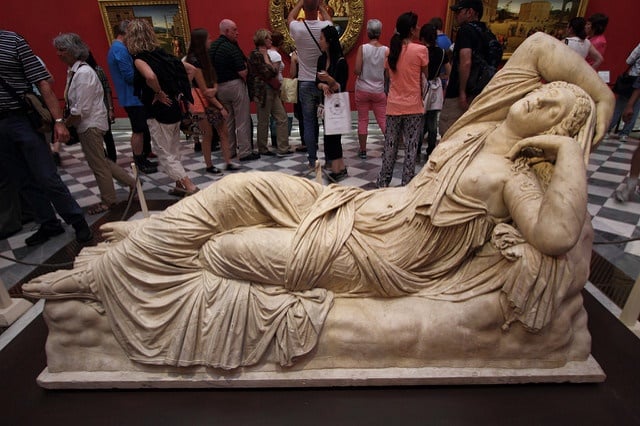
The New York Times recent travel column “The Getaway,” by Seth Kugel lays out the best ways to visit the world’s most treasured monuments and cultural sites. But in true NYT fashion, the columnist begins with some stern finger-wagging admonishments, such as refraining from snapping a selfie or visiting a famous site just so you can check it off your bucket list.
Stonehenge. Courtesy of Hamad Aziz via Flickr.
Kugel then writes, in one of the most obvious “tips” for travelers: “The ultimate way to avoid crowds is to visit in the off season.”
However, beyond these laughable schoolmarmish reproaches, he does get some sage advice from figures such as Uffizi director Eike Schmidt, who notes, “Americans love to eat early. Have an early lunch and get to the Uffizi something like 1 p.m., when the vast majority of people head off to eat.” Notwithstanding the fact that we presume the crowd at the Uffizi is not made up entirely of Americans, it sounds pretty sensible. Also, timed tickets can usually be bought days in advance for a few extra Euros and will “take care of waiting in line, if not the crowds.”
The Statue of Liberty. Courtesy of Steve Parker via Flickr
Another valuable tip in the story that could be applied broadly here, beware of “unofficial sites that look official,” which the story says are “rampant…You can pay $30 or $40 on a fake website.”
Set aside time for “less famous but equally worthwhile,” sites close to the main attraction, such as the Wilshire Museum and the Salisbury Museum near Stonehenge, advises Susan Greany, senior properties historian at English Heritage. It’s a great way to find hidden gems like, say, a side trip to see the historic Isenheim altarpiece at Musee Unterlinden in Colmar France, while at Art Basel, or even on local excursions, an impromptu visit to Louise Bourgeois’ longtime Chelsea townhouse and studio on a power tour of Chelsea galleries.
Kugel also recommends “Reading up on an attraction,” which “can make a vast difference in how much you appreciate it.” He tackled John Hemming’s The Conquest of the Incas before visiting Machu Picchu for the first time. On a comparable personal note, I was particularly happy when a fellow bookworm tipped me off to Orhan Pamuk’s Istanbul-centric Museum of Innocence before a work trip to Turkey this past fall, not to mention a subsequent and extremely gratifying excursion on a steep street off the main avenue (Istiklal) to find the author’s real-life version.
The last bit of advice was, perhaps, the best. If its really going to be impossibly time-consuming to fit in an obligatory visit: “Don’t worry about what your friends will think. You can use Photoshop to show them you ‘saw’ The Birth of Venus.”